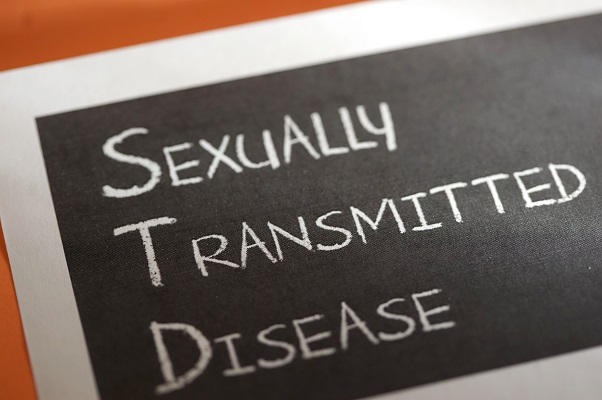
Prepared by Dr Warren Lo Hwa Loon
Consultant Urologist
Gleneagles Kuala Lumpur
The famous writer Aldous Huxley once stated: “Chastity – the most unnatural of all the sexual perversions.”
While being chaste may not be an option for healthy adults in monogamous relationships, it is the only method of preventing sexually transmitted diseases (STDs). Huxley may have ironically described not indulging in sex as a sexual perversion, it is unprotected and risky sexual activities that are causing harm in the form of STDs across the world today. In many cases, they are undetected and sufferers show no symptoms.
Historical documentation of STDs date back to Biblical times and there were often shame and stigma associated with these infections. Syphilis is believed to have ancient origins and became first widely recognised and reported in 1490s, when an epidemic swept across Europe. Herpes became widespread in the 60s and 70s. AIDS shocked the world in the late 20th century.
Today, the high prevalence of symptom-free STDs are often labelled by scientists as a ‘hidden epidemic’. Patients with STDs may not present with obvious symptoms of the disease. Others may experience symptoms such as vaginal discharge, urethral discharge, burning sensation while passing urine, genital lesion, abdominal pain and painful intercourse. Some patients may suffer from STD related conjunctivitis, arthritis, warts and cancers.
More than 30 different bacteria, viruses and parasites are now known to be transmitted through sexual contact.
Health Impact – The Alarming Numbers
STDs have a profound impact on sexual and reproductive health worldwide.
The latest statistical analysis by the World Health Organisation (WHO) revealed that more than 1 million STD infections happen every day worldwide.
There are an estimated 357 million new STD cases such as chlamydia, gonorrhoea, syphilis and trichomoniasis each year.
More than 500 million people are estimated to have genital infection with the herpes simplex virus and more than 290 million women suffer from a human papillomavirus (HPV) infection. HPV infection causes 528,000 cases of cervical cancer and 266,000 cervical cancer deaths each year.
About 1.1 million new cases of chlamydia were reported in 2017. Up to 40% of women with untreated chlamydia develop pelvic inflammatory disease (PID) with subsequent infertility. It was also reported that over 900,000 pregnant women are infected with syphilis each year, resulting in approximately 350,000 adverse birth outcomes including stillbirth and abortion. Besides, low-birth-weight, prematurity and congenital deformities can also result from mother-to-child transmission of STDs.
The Cure?
Whilst some STDs such as syphilis, gonorrhoea, chlamydia and trichomoniasis are curable, there are also others like hepatitis B, herpes simplex virus (HSV), HIV and HPV which are incurable. Symptoms due to this incurable viral infections can however be reduced or modified through treatment.
HSV type 2 and syphilis can increase the risk of an HIV infection. The emergence of drug resistance in virus and bacteria means we are seeing a major threat in reducing the impact of STDs worldwide.
How It Spreads
Apart from sexual contact such as vaginal, anal and oral sex, STDs are also transmissible through non-sexual ways. Kissing where saliva is exchanged, sharing contaminated personal items such as towels, sharing needles among intravenous drug user and blood transfusion present risks.
More importantly, diseases such as chlamydia, gonorrhoea, hepatitis B, HIV, and syphilis can also be transmitted from mother to child during pregnancy and childbirth.
Organisms that cause sexually transmitted diseases may pass from person to person in blood, semen, or vaginal and other bodily fluids. Anal sex is the highest-risk sexual behaviour for HIV transmission, followed closely by vaginal sex. Oral sex do carry some risk for contracting HIV.
Treatment & Testing
Some vaccinations may help in reducing the risk of certain infections including hepatitis B and some types of HPV. Safer sex practices such as use of condoms and having a monogamous relationship also reduce the risk. Circumcision in males may be effective to prevent some infections. At the same time comprehensive sex education for young students is important in creating awareness as the highest incidence of STDs are found in teenagers and young adults.
Is it possible to get a false negative from STD tests? Yes, especially if the STD test is performed too soon after a risky sexual contact. Some STDs take time to develop and the test may not detect any infection. For instance, HIV has a 6-month window period where seroconversion to positive may occur after a negative test. Some STD tests are less effective at detecting positive results for newly acquired infections. There is no test that is 100 percent effective so regular screenings are recommended for those in high risk categories.
Support
Understandably, people seeking screening and treatment for STDs do face various hurdles. Stigmatization, poor quality of health services, difficulties in tracking infected sexual partners and limited resources all contribute to the rising number of STD cases. Marginalized populations such as sex workers, intravenous drug abuser and prison inmates often do not realise the health risks that they face.
STDs have always been a taboo and many people who contract the disease often suffer in silence.
Raising public awareness, offering sex counselling opportunities, providing easier access to treatments and screenings as well as closely monitoring the emergence of drug resistant STDs are steps that we as a society can adopt to curb the spread of the disease.
We must not stop educating the young (and / or the restless) on the dangers of risky sexual behaviours and how they can keep themselves safe and healthy.
If I may use actor John Barrymore’s quote, “Sex: the thing that takes up the least amount of time and causes the most amount of trouble” – this could serve as a tongue-in-cheek reminder of how a moment of careless pleasure could lead to long-term pain.

Wait a minute

Wait a minute